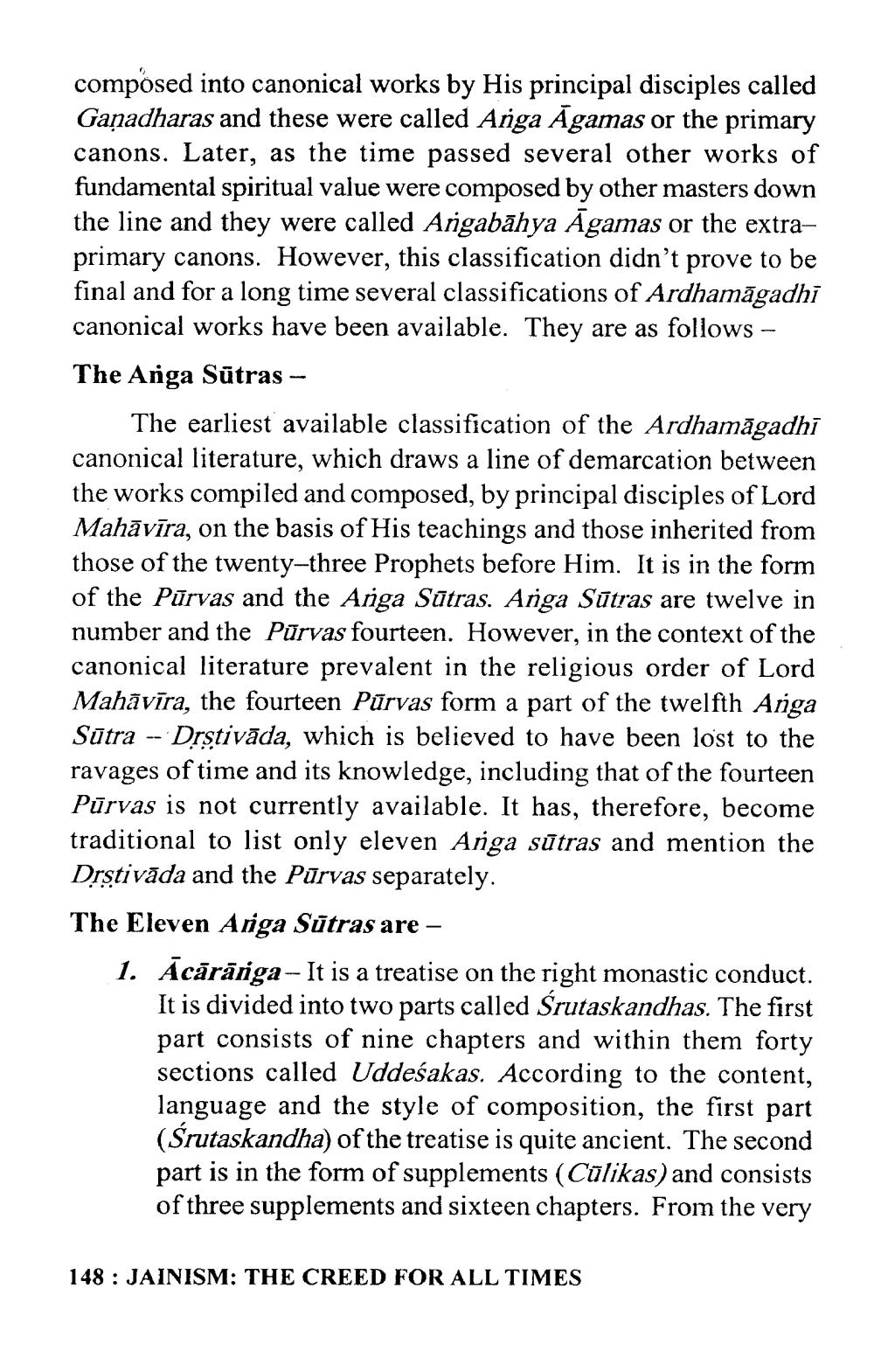________________
composed into canonical works by His principal disciples called Ganadharas and these were called Anga Agamas or the primary canons. Later, as the time passed several other works of fundamental spiritual value were composed by other masters down the line and they were called Angabāhya Āgamas or the extraprimary canons. However, this classification didn't prove to be final and for a long time several classifications of Ardhamāgadhi canonical works have been available. They are as follows - The Anga Sūtras -
The earliest available classification of the Ardhamāgadhi canonical literature, which draws a line of demarcation between the works compiled and composed, by principal disciples of Lord Mahāvīra, on the basis of His teachings and those inherited from those of the twenty-three Prophets before Him. It is in the form of the Pūrvas and the Anga Sūtras. Arga Sūtras are twelve in number and the Pūrvas fourteen. However, in the context of the canonical literature prevalent in the religious order of Lord Mahāvīra, the fourteen Pūrvas form a part of the twelfth Anga Sūtra -- Drstivāda, which is believed to have been lost to the ravages of time and its knowledge, including that of the fourteen Pūrvas is not currently available. It has, therefore, become traditional to list only eleven Arga sūtras and mention the Drștivāda and the Pūrvas separately. The Eleven Ariga Sūtras are - 1. Ācārārga - It is a treatise on the right monastic conduct.
It is divided into two parts called Śrutaskandhas. The first part consists of nine chapters and within them forty sections called Uddeśakas. According to the content, language and the style of composition, the first part (Śrutaskandha) of the treatise is quite ancient. The second part is in the form of supplements (Cālikas) and consists of three supplements and sixteen chapters. From the very
148 : JAINISM: THE CREED FOR ALL TIMES




